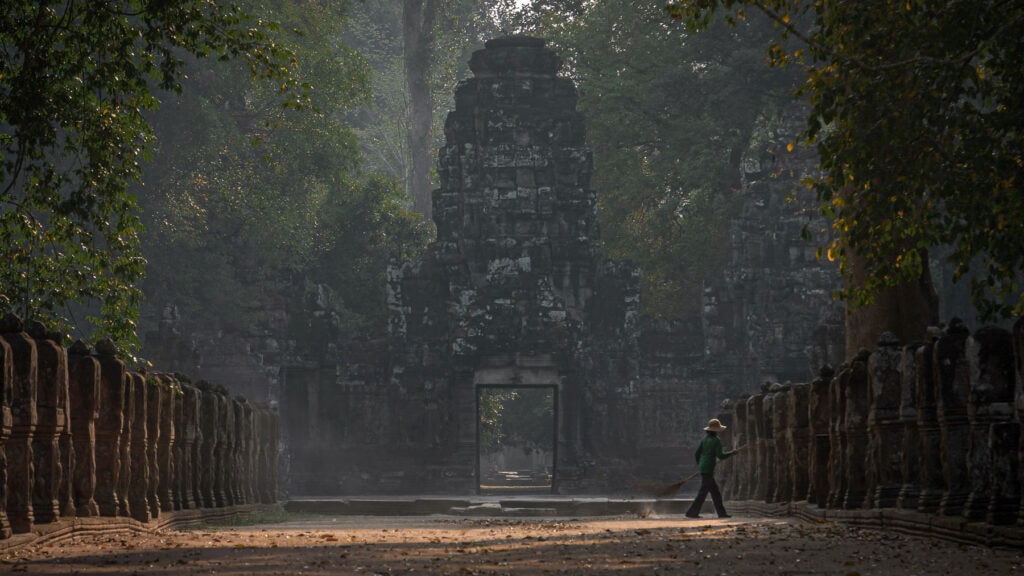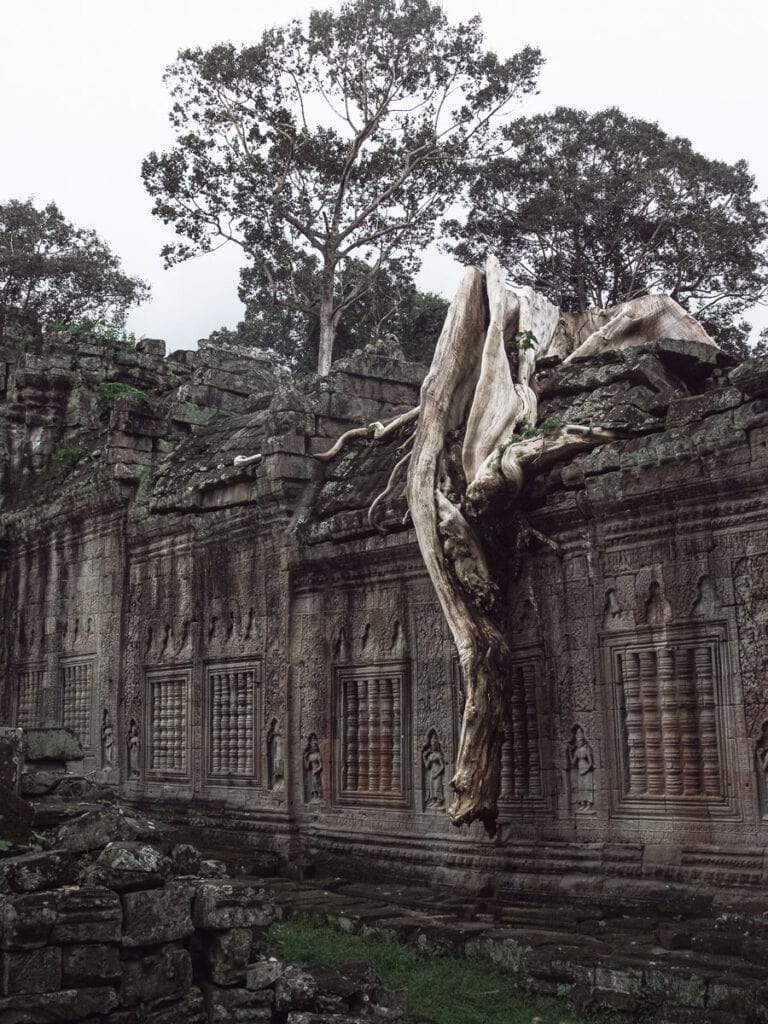
March, 2022
Preah Khan | Angkor | Cambodia
Preah Khan is one of the largest temple complexes in the Angkor. It was built in 1191AD by King Jayavarman VII. The King, who earlier had dedicated Ta Prohm Temple to his mother, decided to dedicate Preah Khan to his father. As a consequence, the statue of Lokeshvara was carved to resemble the King’s father.
In the past, Preah Khan was an important temple and it simultaneously acted as a city, as a temple and as a Buddhist university. According to a stele that is located inside the complex, nearly 100,000 people lived there. These people had many different backgrounds, including teachers, monks, dancers, rice farmers and more. Some say that Preah Khan was like a small city inside Angkor.
Preah Khan is located at the northern edge of Angkor Archeological Park on the exact site where King Jayavarman VII defeated the occupying forces of the Cham Empire in 1181.
Preah Khan has a rectangular shape and occupies an area of 138 acres. Its boundaries are protected by a moat and fortified walls. There are four gates that allow entry into the temple complex, each located in one of the cardinal points and each with a causeway over the moat. The main entrance is the eastern one, where there are the ruins of a small landing stage for boats, and two lions standing guard. To the east of Preah Khan lies the Jayatataka Baray, the last of the man-made reservoirs to be built in Angkor.
The temple is flat in design, with a basic plan of 4 successive rectangular enclosures.
The complex consists of four enclosures:
- The outermost enclosure was filled with wooden houses and huts were common people lived. However, the wooden structures have long gone.
- Similar to Ta Prohm and Banteay Kdei, Preah Khan has a Hall of Dancers. This is located within the third enclosure.
- The second enclosure is very narrow and contains six sanctuary building on the eastern side of the temple.
- The first enclosure, also called the inner sanctuary (or main sanctuary), is the most sacred part of the temple. It is decorated with a wide range of Buddha’s images all through the walls, tombs and chapels.
As King Jayavarman VII was a devout Buddhist, Preah Khan was built as a Buddhist temple. Nevertheless, after his death most depictions of Buddha have been destroyed or changed into praying Hindu figures over the next decades.
Just like most other temples in Angkor, it’s believed that Preah Khan was deserted at some point in the 16th century. The temple was eventually rediscovered by French explorers in the late 19th century but it wasn’t until the late 1920s that the area was initially cleared. Some restoration work was carried out in 1939, but this was interrupted by the Japanese invasion during the Second World War and later by the Khmer Rouge Period.
However, since 1991, Preah Khan has been undergoing a restoration and maintenance project. The project is managed by the World Monuments Fund and was the first of its kind after the end of Cambodia’s devastating civil war.












